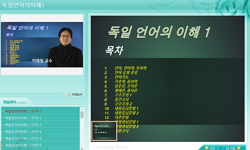This study focuses on a particular type of formulaic expressions called situation-bound utterances. Since the meaning of these pragmatic units is shaped by the interplay of linguistic and extralinguistic factors, they are best accounted for in a theor...
http://chineseinput.net/에서 pinyin(병음)방식으로 중국어를 변환할 수 있습니다.
변환된 중국어를 복사하여 사용하시면 됩니다.
- 中文 을 입력하시려면 zhongwen을 입력하시고 space를누르시면됩니다.
- 北京 을 입력하시려면 beijing을 입력하시고 space를 누르시면 됩니다.
한·영 상황의존 발화의 인지·화용론적 연구 = A cognitive-pragmatic study of situation-bound utterances in Korean and English
한글로보기https://www.riss.kr/link?id=T8952351
- 저자
-
발행사항
[경산]: 대구가톨릭대학교, 2001
-
학위논문사항
학위논문(석사) -- 대구가톨릭대학교 대학원 , 영어교육 , 2001
-
발행연도
2001
-
작성언어
한국어
- 주제어
-
KDC
747.000
-
발행국(도시)
대한민국
-
형태사항
iii, 42 p..
- 소장기관
-
0
상세조회 -
0
다운로드
부가정보
다국어 초록 (Multilingual Abstract)
This study analyses the characteristic features of situation-bound utterances in a cognitive-pragmatics framework which give a comprehensive view of the phenomenon of formulaic expression. The features of situation-bound utterances are as follow : First, the meaning of situation-bound utterances is pragmatically conditioned within situational frames. Second, situation-bound utterances behave like words, but they are pragmatic rather than lexical units. Thus there is reference to a particular frame or script. Each situation-bound utterance is characterized by the sub-event of the script for the given frame with which it is associated. Third, the role of formulaic expressions in second languages is important, because formulaic speech is the basis for a creative speech. And second languages are acquired through a process of learning unanalyzed chunks of language.
To explain the word-like behavior of situation-bound utterances, this study used an approach similar to that of Cruse's (1992) who discussed the relationship between concept and words. Cruse classified words as 'plain' words and 'charged' words at the lexical semantic level. I suggest, when adapted to the discourse level, his approach needs modification because 'plain words' receive a pragmatic charge from the situation. I suggest the classification of words according to their discourse functions should be extended. The types of situation-bound utterances can be distinguished as follows : plain situation-bound utterances, charged situation-bound utterances and loaded situation-bound utterances at the discourse level. Situation-bound utterances, important in second language, are based on conceptual metaphor and conventional implicature. For example, on the forms of expressing politeness and humility. Korean prefers listener-oriented view to speaker-oriented view, while English prefers speaker-oriented view to listener-oriented view. Metaphorical competence is as important in second language production and comprehension as grammatical and communicative competence. Second language learners' concern is the proper use of words and expressions, so further research is needed to investigate and describe the figurative idiomatic structure of languages. I believe effective and reasonable communication is achieved when situation-bound utterances are used appropriately.
This study focuses on a particular type of formulaic expressions called situation-bound utterances. Since the meaning of these pragmatic units is shaped by the interplay of linguistic and extralinguistic factors, they are best accounted for in a theoretical framework which represents a knowledge- for-use conception. The cognitive-pragmatics reflect human conceptual structure and general principles of cognitive organization. A cognitive-pragmatic approach to situation-bound utterances reveals that in many cases cognitive mechanisms, such as metaphor and conventional knowledge, are responsible for the unique situational meaning of situation-bound utterances.
This study analyses the characteristic features of situation-bound utterances in a cognitive-pragmatics framework which give a comprehensive view of the phenomenon of formulaic expression. The features of situation-bound utterances are as follow : First, the meaning of situation-bound utterances is pragmatically conditioned within situational frames. Second, situation-bound utterances behave like words, but they are pragmatic rather than lexical units. Thus there is reference to a particular frame or script. Each situation-bound utterance is characterized by the sub-event of the script for the given frame with which it is associated. Third, the role of formulaic expressions in second languages is important, because formulaic speech is the basis for a creative speech. And second languages are acquired through a process of learning unanalyzed chunks of language.
To explain the word-like behavior of situation-bound utterances, this study used an approach similar to that of Cruse's (1992) who discussed the relationship between concept and words. Cruse classified words as 'plain' words and 'charged' words at the lexical semantic level. I suggest, when adapted to the discourse level, his approach needs modification because 'plain words' receive a pragmatic charge from the situation. I suggest the classification of words according to their discourse functions should be extended. The types of situation-bound utterances can be distinguished as follows : plain situation-bound utterances, charged situation-bound utterances and loaded situation-bound utterances at the discourse level. Situation-bound utterances, important in second language, are based on conceptual metaphor and conventional implicature. For example, on the forms of expressing politeness and humility. Korean prefers listener-oriented view to speaker-oriented view, while English prefers speaker-oriented view to listener-oriented view. Metaphorical competence is as important in second language production and comprehension as grammatical and communicative competence. Second language learners' concern is the proper use of words and expressions, so further research is needed to investigate and describe the figurative idiomatic structure of languages. I believe effective and reasonable communication is achieved when situation-bound utterances are used appropriately.
목차 (Table of Contents)
- 목차
- (Abstract)
- I. 서론 = 1
- II. 상황의존 발화의 특성 = 3
- 2.1 틀 사용 = 8
- 목차
- (Abstract)
- I. 서론 = 1
- II. 상황의존 발화의 특성 = 3
- 2.1 틀 사용 = 8
- 2.2 어휘화 = 11
- 2.3 창조성 = 14
- III. 상황의존 발화의 유형 = 18
- 3.1 기본의미 = 21
- 3.2 부가의미 = 22
- 3.3 확대의미 = 23
- IV. 한국어 분석 = 25
- V. 결론 = 37
- 참고문헌 = 39












